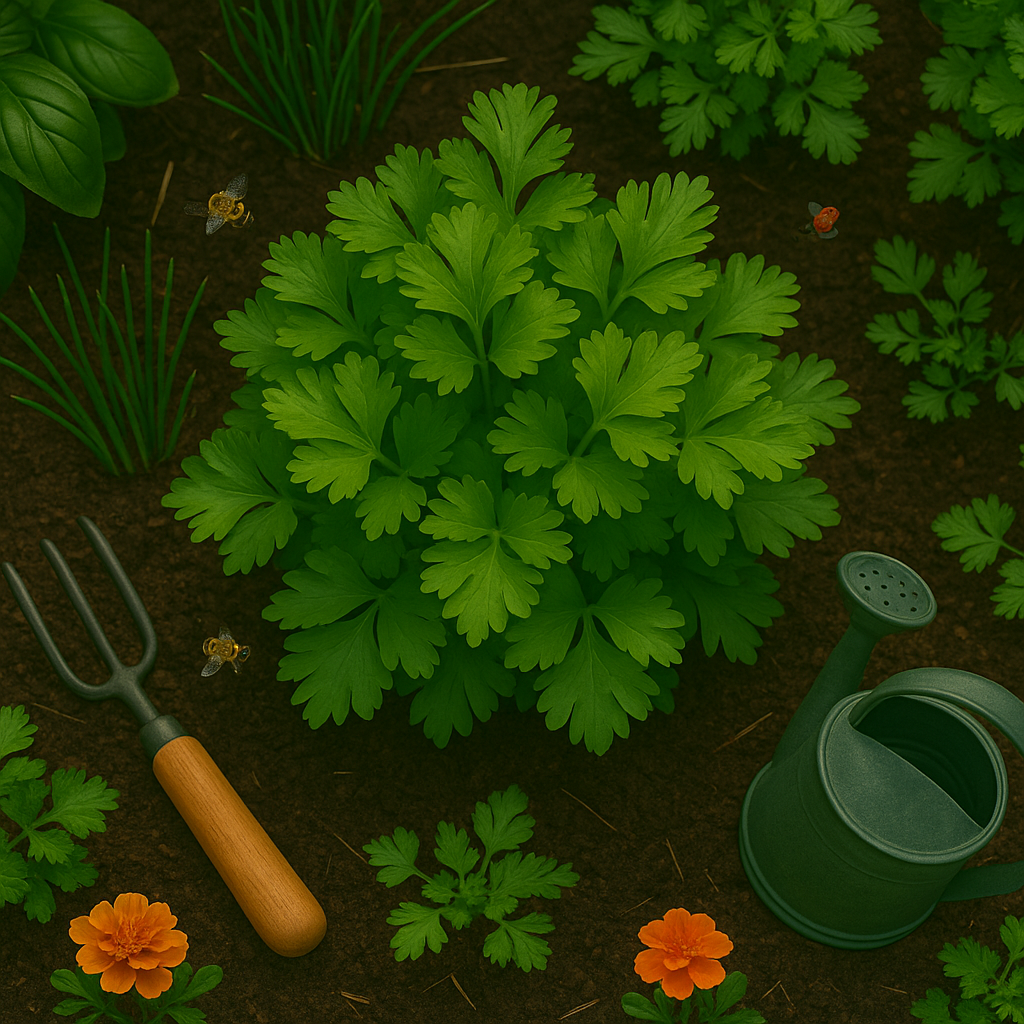Introduction
If you’re searching for the best herbs to grow with parsley, you’re tapping into the powerful world of companion planting. This age-old gardening technique pairs certain plants to boost growth, fend off pests, and make your herb garden flourish. Parsley is a favorite in kitchens worldwide thanks to its bright flavor and versatility. But did you know that the herbs you grow nearby can make all the difference in parsley’s health and harvest?
Choosing the right companions does more than save space; it can naturally repel insect pests, enrich the soil, and even enhance the taste of your parsley. For instance, planting chives or basil alongside parsley helps confuse pests that might otherwise feast on your crop, while dill and cilantro attract helpful pollinators and predatory insects. By picking well-matched herbs to grow with parsley, you can create a mini ecosystem right on your windowsill or in your garden bed.
Whether you’re a seasoned gardener or just getting started, understanding how herb relationships work sets you up for bigger, healthier harvests—all without chemicals. Ready to discover which herbs to pair with parsley for better growth and garden harmony? Let’s dig in.
Best Herb Companions for Parsley
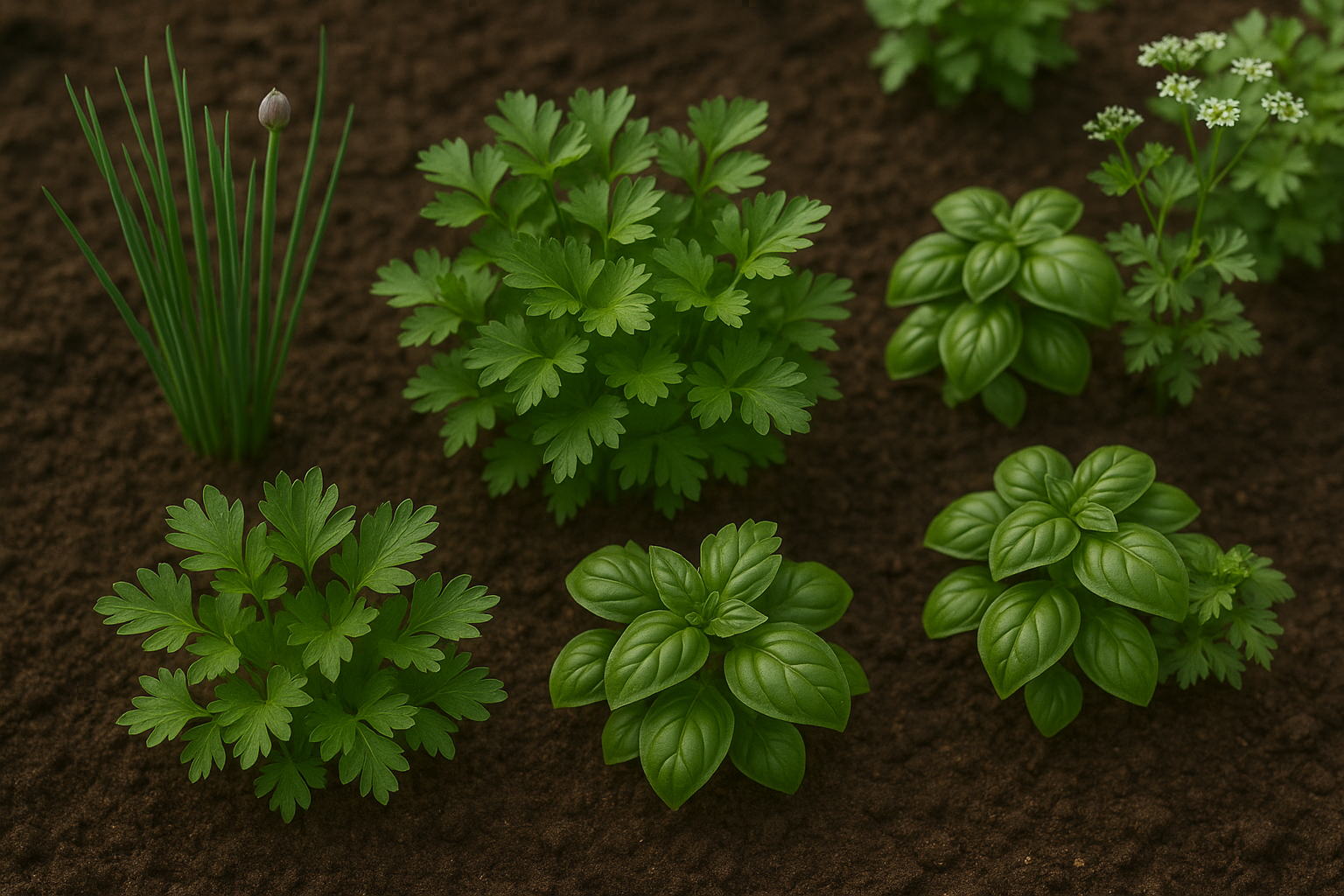
Parsley thrives alongside several friendly herbs that can boost its growth and flavor while naturally minimizing pest problems. Chives are a classic parsley companion, as their distinct aroma helps repel aphids—one of parsley’s most common pests—while also adding a subtle, complementary flavor to culinary dishes.
Basil is another excellent neighbor: it not only wards off unwanted insects but is said to enhance the essential oil content in parsley, potentially making your parsley more aromatic and flavorful.
Cilantro grows happily next to parsley as well; both herbs enjoy similar soil conditions and watering needs. Plus, cilantro’s flowering stage can attract beneficial pollinators and predatory insects, providing an extra layer of natural pest control for your parsley.
For the most effective arrangement, plant parsley and its companions in clusters or alternating rows to create a living barrier against pests and maximize available space. Keep chives towards the edge of the bed since they can spread, while basil can be tucked between parsley plants to promote airflow and balanced shading.
Avoid planting parsley too close to heavy feeders such as mint or to herbs in the carrot family (like dill or fennel), as they’ll compete for nutrients. With thoughtful companion planting, you’ll enjoy healthier, more productive parsley and a vibrant kitchen garden full of fresh flavors.
Herbs to Avoid Planting Near Parsley
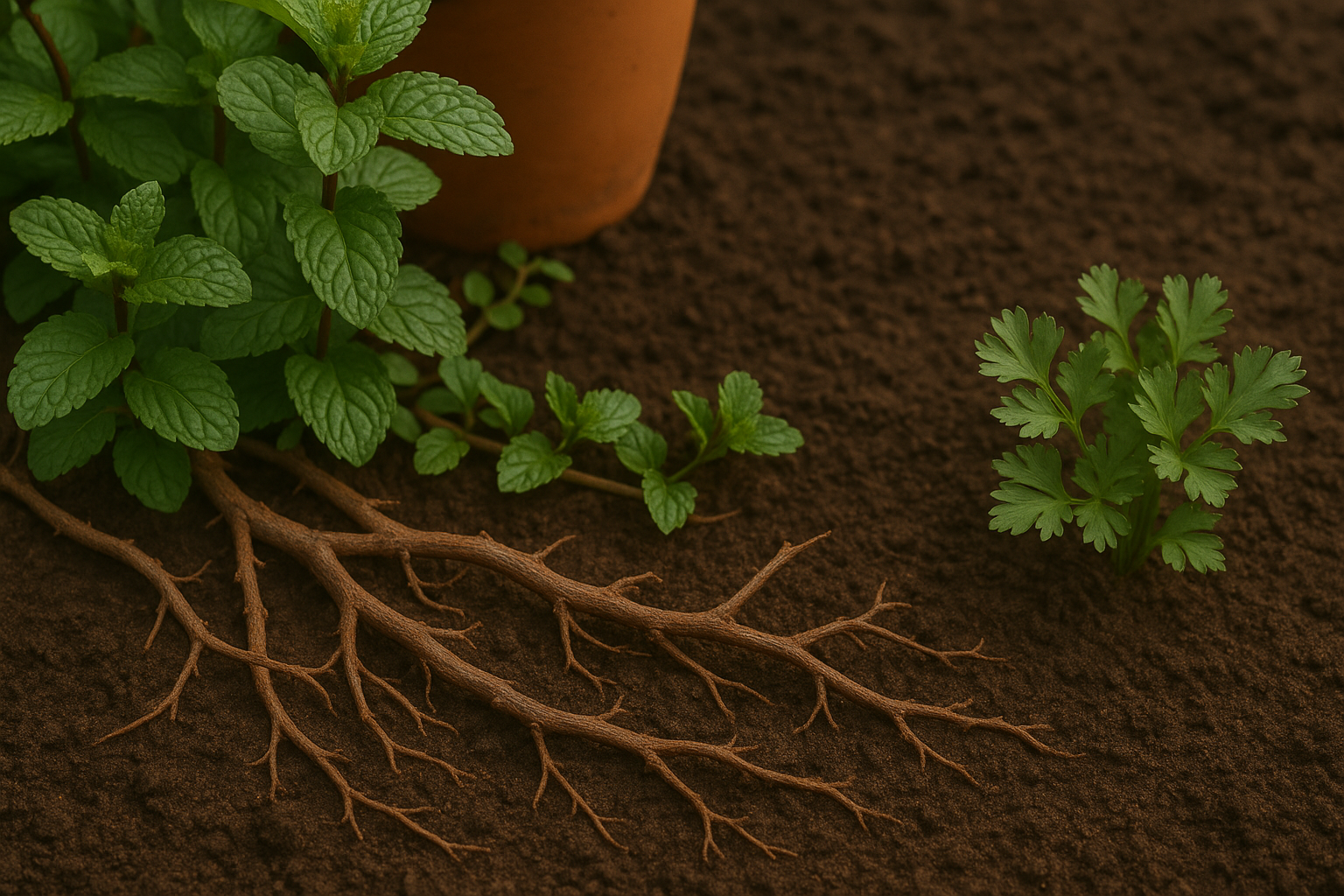
When planning your herb garden, it’s important to know that not all herbs thrive next to each other—especially when it comes to parsley. For example, mint is notorious for its aggressive root system, which competes for nutrients and moisture, often overpowering more delicate herbs like parsley.
Lettuce might seem like a good companion, but it can also compete with parsley for space and resources, limiting each other’s growth. Sage is another herb best planted away from parsley; these two have been shown to stunt each other’s development, likely due to allelopathic chemicals released through their roots.
To keep your herbs healthy, try planting parsley in its own dedicated spot or using containers for more aggressive neighbors like mint. Raised beds with dividers or separate garden sections can also help keep incompatible herbs from competing underground.
Remember, giving each plant the appropriate space and boundaries will promote a thriving herb garden filled with healthy, flavorful harvests.
Parsley’s Vegetable and Flower Companions
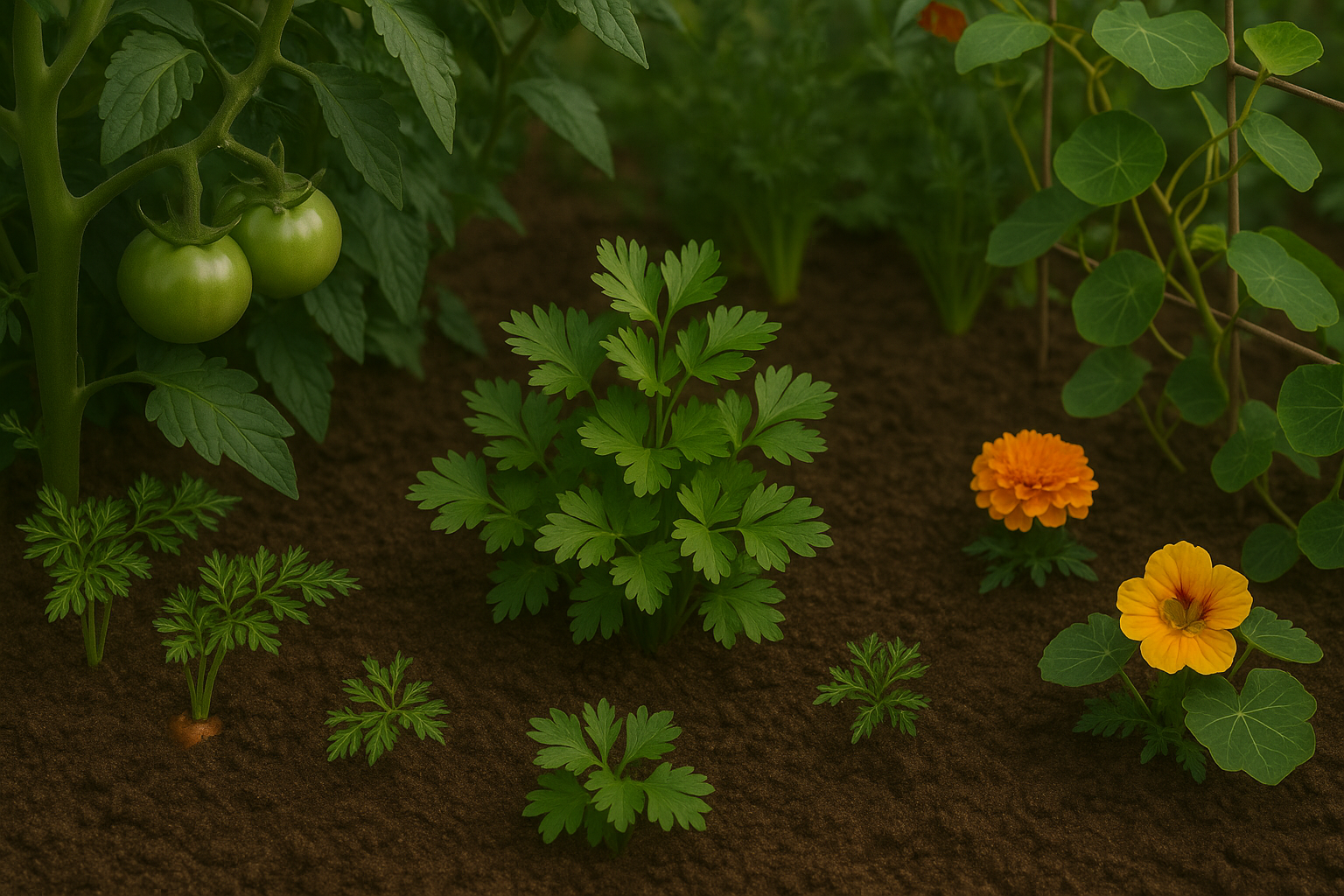
Parsley is a friendly and flexible companion in your garden, thriving alongside a variety of vegetables and flowers. When planted near tomatoes, parsley’s pungent aroma helps deter pests like aphids, making both plants stronger and less likely to fall prey to disease.
Carrots also benefit from sharing space with parsley, as the two help loosen the soil around each other’s roots. However, it’s best to keep a little distance between them to prevent root competition. Asparagus is another excellent neighbor; these two plants support each other’s growth by attracting beneficial insects that prey on common garden pests.
For flowers, marigolds are a time-tested choice—they repel nematodes and aphids while their cheerful blooms brighten up tight spaces. Nasturtiums not only attract pollinators but also lure aphids away from your parsley, acting as a natural “trap crop.”
In small gardens, maximize the benefits of these companions by interplanting: tuck parsley in between tomatoes or asparagus stalks, and sow marigolds or nasturtiums around the borders. Use vertical space creatively by growing parsley at the base of taller vegetables, and add potted marigolds if bed space is limited.
This layered approach saves room, boosts yields, and keeps pests at bay without chemicals. By mixing parsley with the right neighbors, even tiny backyard plots can become vibrant, productive ecosystems with minimal effort.
How to Organize Your Herb Garden for Companion Success
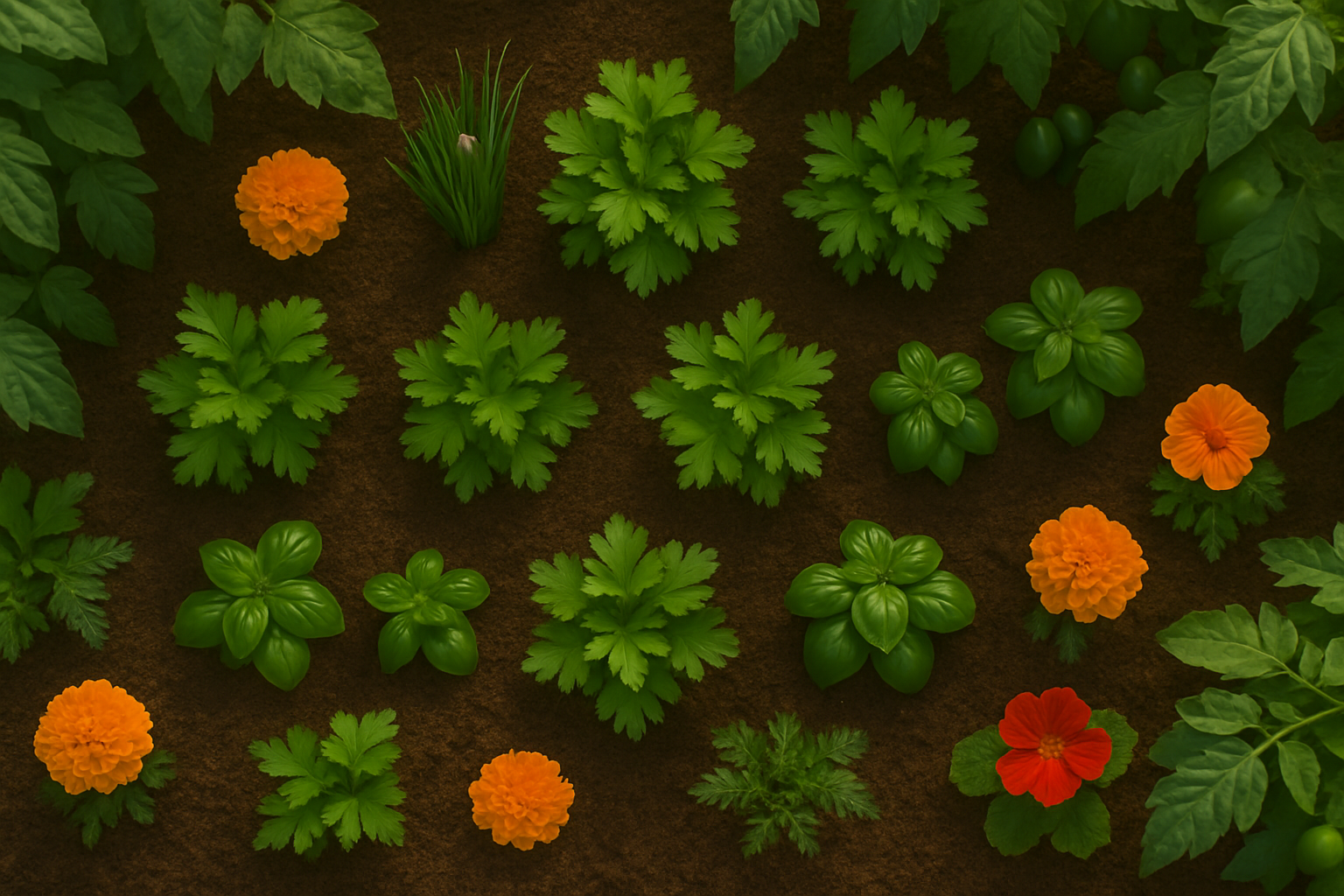
When organizing your herb garden for companion success, start by giving parsley a dedicated spot with enough room to breathe—aim for at least 8 to 10 inches between parsley plants to promote healthy growth and airflow. Parsley thrives alongside basil, chives, and tomatoes, so consider grouping these together for natural pest control and great flavor pairings in the kitchen.
Nasturtiums are also excellent neighbors, adding bright color and attracting beneficial insects that deter aphids. For an easy layout, plant parsley at the edge of your bed or in containers near tomatoes and basil, allowing taller plants to shade parsley during hot afternoons.
Avoid the common mistake of overcrowding; cramming herbs too close reduces airflow and encourages disease. Another pitfall is ignoring sunlight—while parsley likes some shade, it still needs about 4 to 6 hours of sun daily, so choose a spot where early or late sun filters through.
Remember that strong-smelling herbs like mint should be planted in separate containers, as they tend to overwhelm more delicate flavors like parsley. Edging the garden path with low-growing parsley and interplanting chives between taller tomatoes not only boosts pest resistance but also creates a visually pleasing, productive herb garden.
Regularly check that each plant group gets the right amount of sunlight, trim back any that spread too aggressively, and keep records of which combinations succeed. With a thoughtful layout and the right companions, your herb garden will be healthy, vibrant, and easy to harvest.
Caring for Parsley and Its Companions
Parsley thrives in nutrient-rich, well-drained soil that retains moisture without becoming soggy. For a healthy start, mix some compost into your garden bed before planting. Water parsley and its common companions—like tomatoes, carrots, or chives—early in the day and keep the soil consistently damp, especially during hot, dry stretches. Mulching helps lock in moisture and protects roots.
When your parsley grows bushy, pinch or snip the outer stems regularly to encourage fresh, tender growth. Plus, frequent trimming prevents the plant from going to seed too soon. Harvest leaves early in the morning for peak flavor.
One great benefit of companion planting is that partners like chives can help repel pests such as aphids and spider mites naturally, reducing your need for chemical interventions. Even so, keep an eye out for unwanted guests—check under leaves for signs of trouble like holes or sticky residue, and handpick pests when spotted. Rotating your planting spots each year also helps break pest and disease cycles.
Remember, every garden is different: check soil moisture with your finger, observe how plants interact, and don’t hesitate to adjust spacing, watering, or plant partners as needed. Regular observation ensures your parsley and its companions stay healthy, productive, and pest-free.
Conclusion
Choosing the right companions for parsley can transform your garden by promoting healthier plants, naturally deterring pests, and boosting your harvests. Pairing parsley with friendly neighbors like tomatoes, carrots, or chives not only maximizes space but also helps both crops thrive by improving soil health and reducing competition.
Avoid planting parsley next to mint or lettuce, as they can stunt its growth or attract unwanted pests. The benefits of companion planting are clear—less need for chemical pesticides, improved flavor, and easier maintenance.
Whether you’re a beginner or an experienced gardener, experimenting with companion planting brings excitement and satisfaction as you watch your plants flourish together. Give it a try in your own garden, and you’ll soon enjoy lush parsley crops and a vibrant, diverse green space that rewards both effort and creativity.
